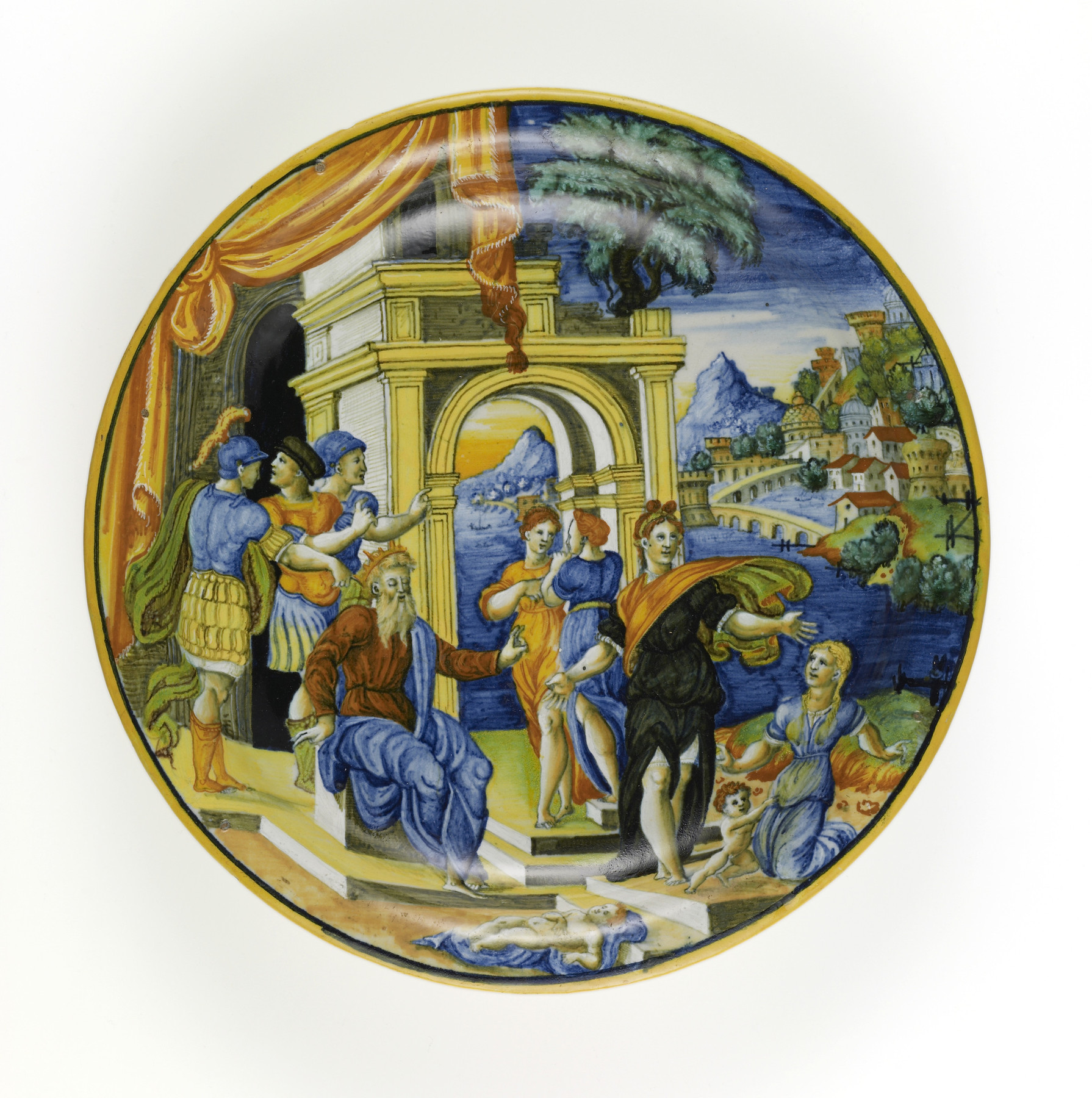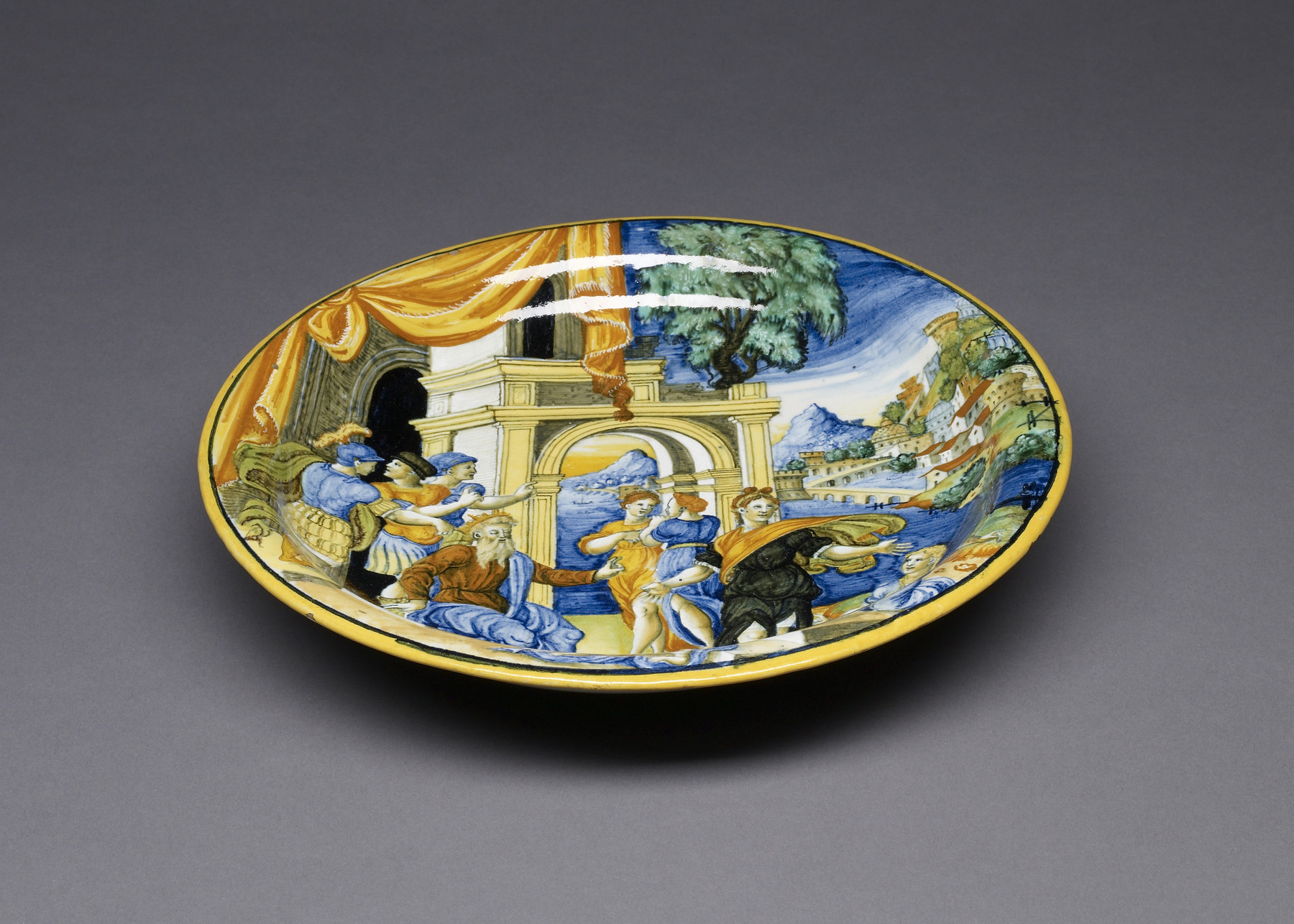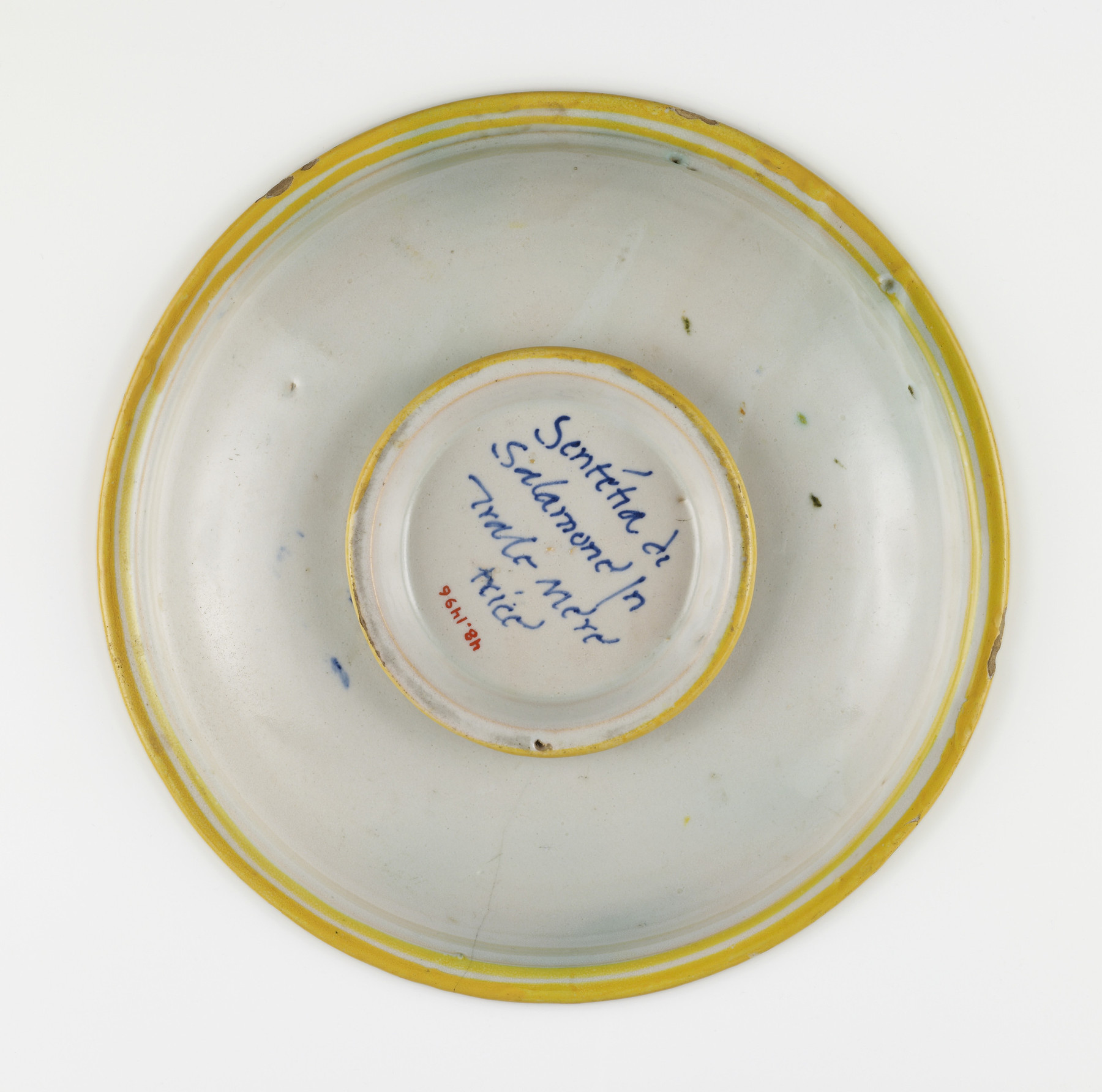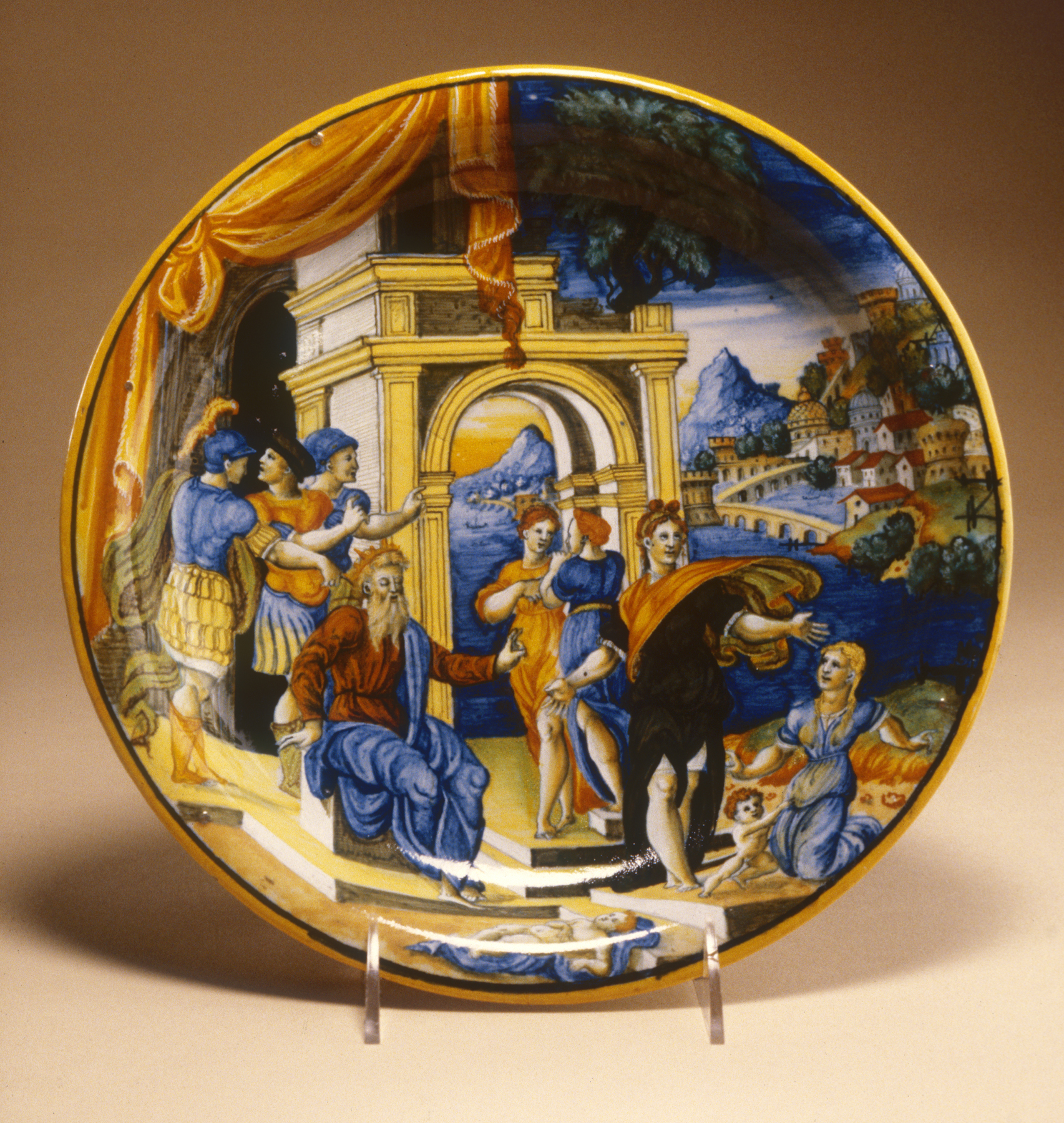Dish with the Judgment of Solomon
(Renaissance Europe )
This ‘istoriato’ dish shows a story from the Old Testament (1 Kings 3:16-28) in which King Solomon wisely judges between two prostitutes each claiming to be the mother of the same infant. On the far right, one mother kneels beside a living child, while to her left, the second mother stands above a dead child lying at her feet. Solomon identifies the rightful mother by threatening to cut the child in half. While one woman believes that this decision is fair, because neither will be able to keep the child, the child’s true mother offers to let her son go so that he will remain alive. Contrary to the Biblical text, Solomon is depicted as blind in this scene. Because this story was considered to be a model of justice, the artist may have made this change in order to convey the idea that justice is blind. In the background, various witnesses point to the scene, marveling at Solomon’s wisdom. The scene takes place in front of a triumphal archway and a walled town, settings that often appeared on “istoriato” (tells a story) wares produced in the mid-sixteenth century.
An inscription painted on the reverse of the dish, “Sentetia di/ Salamone in/ trate meretrice” (Judgment of Salomon between the two prostitutes) identifies the scene depicted on the obverse. The back is also stained with green and includes one yellow circle at the rim, and another at the edge of the foot. This dish was made by the workshop of Guido di Merlino, who employed a number of prolific maiolica painters in Urbino during the 1540s, and produced a large quantity of ‘istoriato’ wares. For more maiolica pieces by Guido di Merlino’s workshop, click on the name in the creator field; for more on “istoriato” wares, see 48.1487; for more on “maiolica,” see 48.1336.The Old Testament story of King Solomon, who wisely judged between two women claiming to be the mother of the same infant, was considered a model of justice. In keeping with the period's preoccupation with antiquity, the king is shown seated before a monumental classical arch that recalls the architecture of ancient Rome. The drapery suspended above the scene creates the impression of a staged performance.
Inscription
Provenance
Provenance (from the French provenir, 'to come from/forth') is the chronology of the ownership, custody, or location of a historical object. Learn more about provenance at the Walters.
Henry Walters, Baltimore [date and mode of acquisition unknown]; Walters Art Museum, 1931, by bequest.
Geographies
Italy, Urbino (Place of Origin)
Measurements
H: 2 × W: 10 3/4 in. (5.1 × 27.3 cm)
Credit Line
Acquired by Henry Walters
Location in Museum
Not on view
Accession Number
In libraries, galleries, museums, and archives, an accession number is a unique identifier assigned to each object in the collection.
In libraries, galleries, museums, and archives, an accession number is a unique identifier assigned to each object in the collection.
48.1496










